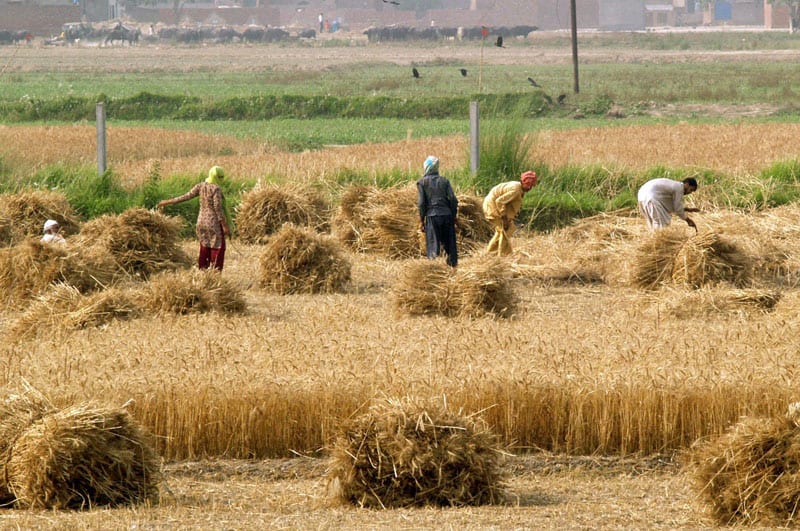In Pakistan, where agriculture is not just an industry but a way of life and a cornerstone of the economy, climate change disrupts traditional patterns. Increasingly severe droughts and erratic monsoons jeopardise food security, rural livelihoods, and the economy. With agriculture employing nearly 45% of the population and contributing 24% to GDP, the sector’s vulnerability to climate change is imminent.
The agricultural sector in Pakistan is facing significant challenges due to rising temperatures, shifting precipitation patterns, and more frequent extreme weather events. These factors are transforming agriculture, leading to reduced yields and heightened uncertainty. Prolonged droughts, heatwaves, and floods further threaten the livelihoods of those dependent on farming.
Pakistan’s diverse cropping systems, including Rabi and Kharif crops, rely heavily on stable water availability and temperature. Major crops such as wheat, rice, sugarcane, and maize are increasingly at risk. A study by Cradock-Henry (2020) predicts an 8% to 10% decline in agricultural production by 2040 due to these changes. The data shows a 0.9°C rise in average temperature from 1980 to 2021.
Dr Lubna Ansari, an agricultural and climate expert, talked to APP and noted that higher temperatures disrupt cropping seasons and reduce grain quality, particularly for wheat and mangoes. Recent reductions in wheat and rice production—14.7% and 20.5%, respectively—reflect these impacts, contributing to higher market prices.
Water scarcity is adding to these problems. Pakistan relies heavily on the Indus River system for irrigation, drinking, and industrial use. However, changing precipitation patterns and increased evaporation are straining this vital resource. The reduced flow in the Indus Basin affects irrigation, while Pakistan’s low wastewater treatment rate and high water withdrawals further stress the system. Without improved water management and conservation, severe shortages could threaten productivity.
Dr Noman Latif Sadozai, Senior Director of the Climate Energy & Water Research Institute at the National Agricultural Research Centre, told APP that erratic monsoon rains result in droughts followed by intense flooding, complicating water management. During droughts, water shortages force reductions in crop areas or shifts to less water-intensive crops, leading to lower yields and financial losses. Conversely, excessive rainfall damages crops and causes soil erosion, further impacting productivity.
Climate change also promotes the spread of pests and diseases, which thrive in warmer, more humid conditions. Crops like cotton and sugarcane are particularly vulnerable, leading to significant losses and threatening food security and farmer livelihoods.
Shamraiz Akhtar, a farmer from Baharwal village in Gujrat, describes the harsh reality of climate change. Excessive heat destroyed 80% of his maize crop, and excessive monsoon rains swept away his pearl millet and rice. He laments, “The effects of climate change have been severe for poor farmers like me.”
Similarly, farmer Junaid Ali, from Amra Kalan town known for its rich agriculture fields in Kharian, has faced devastation. Hailstorms and heavy rains ruined his vegetables, resulting in significant losses. “Fields that once grew ladyfinger and chilli are now barren,” he reports, with 80% of his crops damaged.
Muhammad Arif Goheer, head of the Agricultural and Coordination Section at the Global Climate-Change Impact Studies Centre Islamabad, stresses the urgency of adopting climate-resilient practices and overhauling water management strategies. Without robust intervention, Pakistan’s agricultural sector could face severe productivity declines, endangering its economy and rural communities. Immediate action is crucial to preserve the nation’s agricultural heritage and secure the future of millions who depend on it.
Quratulain, an Agriculture Officer at the Punjab Agriculture Extension Department Rawalpindi, adds that a 1.5°C to 2.0°C rise in temperature due to global warming severely affects food production. High temperatures impact rice grain filling, sowing, soil moisture, seed germination, and harvesting. Changing rainfall patterns also harm wheat crops, with insufficient rain during critical periods and excessive rain in March and April reducing yields.
In conclusion, agriculture and climate experts have advised Pakistan to urgently adopt climate-resilient agricultural practices, enhance water management strategies, and implement robust early warning systems to mitigate the adverse effects of climate change. Without these critical measures, Pakistan’s agricultural sector faces a severe risk of productivity decline, which could devastate rural livelihoods and undermine a vital pillar of the national economy. Policymakers and relevant authorities must act swiftly and strategically to safeguard the future of agriculture and the millions who depend on it.
The article first appeared on the APP.














